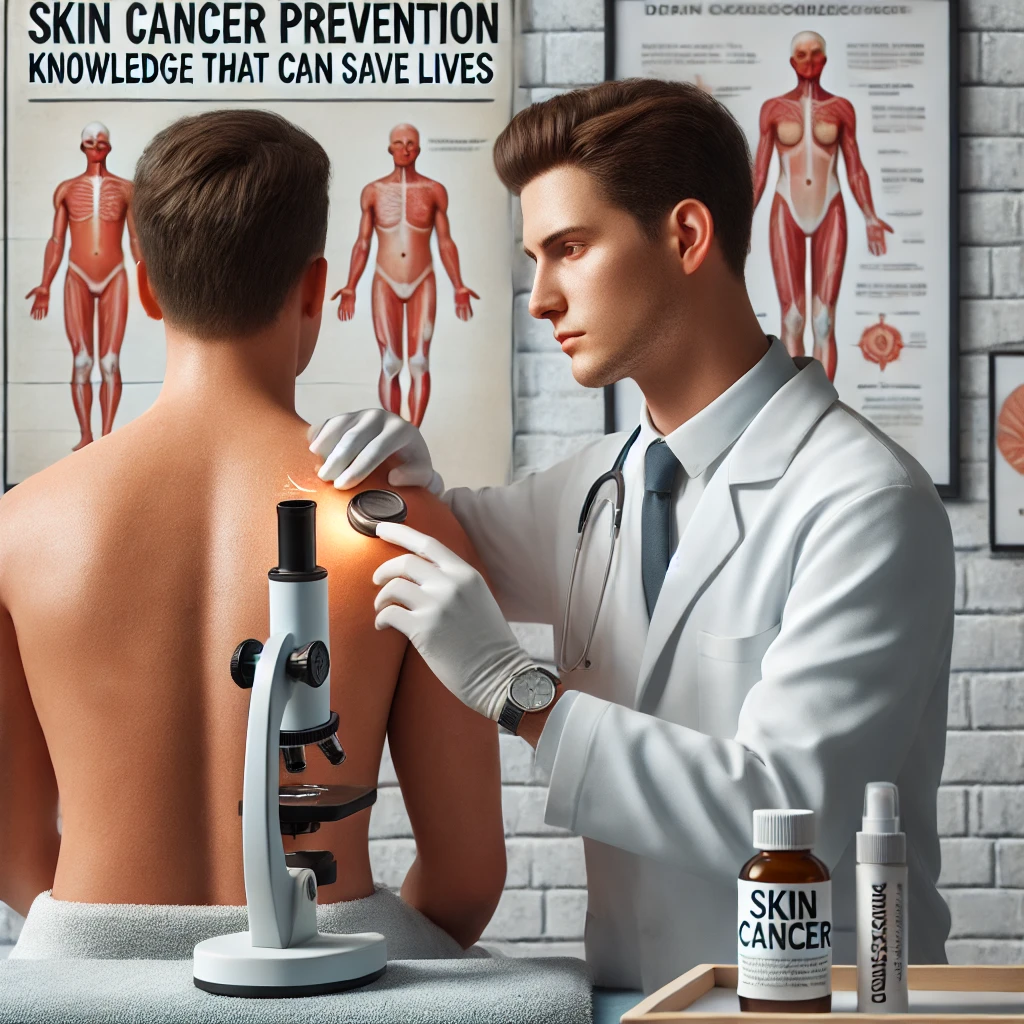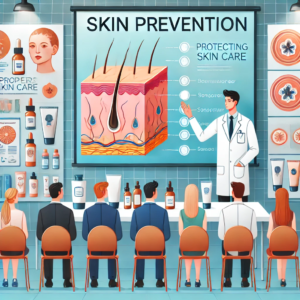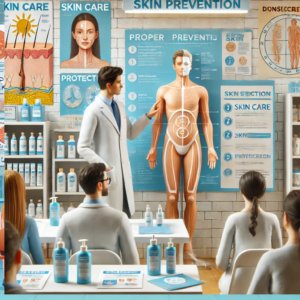Skin Cancer prevention: Knowledge that can save Lives
Introduction to Comprehensive Cardiological Care
In the pursuit of a long and healthy life, comprehensive cardiological care stands as a cornerstone. The heart, being the most vital organ, necessitates meticulous attention and care. Cardiological care isn’t merely about treating diseases; it’s about a holistic approach that encompasses prevention, diagnosis, treatment, and ongoing management. This approach ensures that individuals not only survive but thrive, maintaining an optimal quality of life.


Advanced Protective Measures
Sun-Protective Behavior
- Lip Balm with SPF: Use lip balm containing SPF to protect your lips from UV rays.
- UV-Protective Window Film: Apply UV-protective film to car and home windows to block harmful rays.
- Avoid Reflective Surfaces: Water, sand, and snow can reflect and intensify UV rays, increasing exposure.
Innovative Technology
- UV Monitoring Apps: Use smartphone apps that provide daily UV index forecasts and reminders to reapply sunscreen.
- Smart Clothing: Wear clothing embedded with UV sensors that alert you when you need more protection.
Understanding Skin Cancer
Types of Skin Cancer
Skin cancer occurs when abnormal skin cells grow uncontrollably. The three primary types of skin cancer are:
- Basal Cell Carcinoma (BCC): The most common type, usually appearing as a waxy bump or flat lesion. It often occurs on sun-exposed areas like the face and neck.
- Squamous Cell Carcinoma (SCC): Appears as a red, scaly patch or a firm, raised bump. It also commonly affects sun-exposed areas but can spread to other parts of the body if not treated.
- Melanoma: The most dangerous form of skin cancer. It can develop in existing moles or suddenly as a new dark spot. Melanoma can spread rapidly to other organs if not caught early.
Risk Factors for Skin Cancer
Several factors can increase the risk of developing skin cancer:
- UV Exposure: The most significant risk factor. Ultraviolet (UV) radiation from the sun and tanning beds damages skin cells, leading to cancer.
- Fair Skin: Individuals with lighter skin, hair, and eyes have less melanin, providing less protection against UV radiation.
- Family History: A family history of skin cancer increases the risk.
- Moles: Having many moles or atypical (dysplastic) moles increases the risk of melanoma.
- Age: Older individuals are at higher risk due to cumulative sun exposure over the years.
The Importance of Skin Cancer Prevention
Daily Sun Protection
Preventing skin cancer begins with protecting your skin from harmful UV rays. Simple daily habits can significantly reduce your risk.
- Sunscreen: Use a broad-spectrum sunscreen with an SPF of 30 or higher. Apply generously and reapply every two hours, or more often if swimming or sweating.
- Protective Clothing: Wear long-sleeved shirts, pants, wide-brimmed hats, and sunglasses. Fabrics with a high UV protection factor (UPF) offer better protection.
- Shade: Seek shade, especially between 10 a.m. and 4 p.m. when UV rays are strongest.
- Avoid Tanning Beds: Tanning beds emit UV radiation that increases the risk of skin cancer.
Regular Skin Checks
Early detection is crucial for effective treatment of skin cancer. Regular skin checks can help you spot changes early.
- Self-Examinations: Perform monthly skin self-exams. Check your entire body, including hard-to-see areas like your back and scalp. Use a mirror or ask someone for help.
- Know Your Skin: Familiarize yourself with the pattern of moles, freckles, and other marks on your skin. Look for changes in size, shape, color, or texture.
- Professional Exams: See a dermatologist annually for a professional skin exam. If you have a higher risk of skin cancer, you may need more frequent check-ups.
Recognizing the Signs of Skin Cancer
The ABCDEs of Melanoma
Detecting melanoma early can save lives. The ABCDE rule helps identify suspicious moles:
- Asymmetry: One half of the mole doesn’t match the other half.
- Border: Irregular, scalloped, or poorly defined border.
- Color: Varies from one area to another; shades of tan, brown, black, and sometimes white, red, or blue.
- Diameter: Melanomas are usually greater than 6mm (the size of a pencil eraser), but they can be smaller.
- Evolving: A mole or skin lesion that looks different from the rest or is changing in size, shape, or color.
Other Warning Signs
- Sores that Don’t Heal: A sore that doesn’t heal within a few weeks should be evaluated.
- New Growths: Any new mole or lump on the skin should be examined.
- Itching or Bleeding: Persistent itching, tenderness, or bleeding is a red flag.
The Role of Diet and Lifestyle
Nutrition and Skin Health
A healthy diet can support your skin’s defenses against UV damage.
- Antioxidants: Foods rich in antioxidants (e.g., berries, nuts, and green leafy vegetables) can help protect your skin from damage.
- Omega-3 Fatty Acids: Found in fish and flaxseed, omega-3s can reduce inflammation and boost skin health.
- Hydration: Drinking plenty of water keeps your skin hydrated and healthy.
Avoiding Carcinogens
- Tobacco and Alcohol: Avoid smoking and excessive alcohol consumption, as they can increase the risk of skin cancer.
- Chemical Exposure: Limit exposure to chemicals that can damage your skin, such as certain pesticides and industrial compounds.
Conclusion
Skin cancer prevention is a vital aspect of maintaining overall health. By understanding the risk factors, recognizing early signs, and adopting preventive measures, you can significantly reduce your risk of developing skin cancer. Regular self-examinations, professional check-ups, and a proactive approach to sun protection are essential in safeguarding your skin. Remember, knowledge is power. Equip yourself with the information and tools needed to protect your skin, and share this knowledge with others. Taking action today can prevent skin cancer and save lives.
Invest in your skin health now to enjoy a healthier future. Embrace preventive measures, stay vigilant, and educate others about the importance of skin cancer prevention. Your skin is your body’s largest organ – treat it with the care and respect it deserves.



 Italy
Italy
 Spain (Soon)
Spain (Soon)
 France (Soon)
France (Soon)
 Greece (Soon)
Greece (Soon)
 Portugal (Soon)
Portugal (Soon)
 Holland (Soon)
Holland (Soon)

